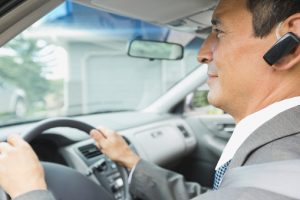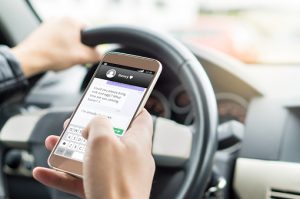Buffalo Traffic Accidents & Hands-Free Cell Phone Risks
 Many drivers try to do the right thing by using a hands-free system when they use their phones in the car. Hands-free control makes it possible for people to talk on the phone, but also to text, read or send emails and do other tasks on electronic devices.
Many drivers try to do the right thing by using a hands-free system when they use their phones in the car. Hands-free control makes it possible for people to talk on the phone, but also to text, read or send emails and do other tasks on electronic devices.
Unfortunately, the reality is that you aren’t any safer using a hands-free device than you would be using a cell phone and holding it. You still take your focus off the road, which makes you more likely to cause a motor vehicle collision. You could hurt yourself or others and be held legally responsible for injuries. Texting accident driving attorneys in Buffalo can help those injured by distracted drivers.
Hands-Free Systems Still Can be Dangerous
According to Cars.com, 80 percent of drivers surveyed across the United States said that they believed that it was safer to use a hands-free phone system than to use a handheld phone system while driving. Around 70 percent of motorists who currently use hands-free systems said that they do so because of safety concerns.
These hands-free systems may be making things worse because drivers assume they aren’t at risk and are more comfortable spending a longer time on the phone. This problem is made worse because state laws lend support to this idea. As USA Today reports, there are total bans on using handheld devices in 12 states and there are bans on texting in 43 states. There are not any bans anywhere on the use of hands-free devices, so drivers just naturally assume that they are OK to be on the phone.
These drivers don’t realize that the center of their brain devoted to seeing visual activities is 1/3 less active when there are using their hands-free kit. As the National Safety Council (NSC) shows, the brain can’t multitask but is forced to switch back and forth between the phone use and the focus on what’s going on in the car. The brain doesn’t do this really effectively and around 50 percent of the visual information you should see outside your windshield is missed.
The result is that motorists on hands-free kits are just as likely, if not more likely, to crash. Recent studies have suggested that a person using voice-to-text is more distracted than someone who is texting using the handheld phone. Voice-to-text can also take longer to complete than just sending a regular text, so drivers are less focused on the road and are distracted for a longer time.
Around nine percent of drivers on the road at any given time are using a hands-free device, and these drivers are responsible for a lot of accidents. In total, there were 3,327 driving deaths because of distracted driving in 2012 and around 26 percent of the total number of motor vehicle collisions nationwide involved a driver on a phone.
Most safety experts believe the best way to solve this is a total ban on all phone use, including with a hands-free device. Until the law changes, though, drivers will just have to police themselves and make the commitment to turn their phones off or keep them out of reach in the car.
Contact a Buffalo accident attorney at the Law Offices of James Morris at 1-800-477-9044. Attorney advertising.





 States including New York are considering regulation of a device called Google Glass, which looks like a pair of glasses and allows users to surf the Internet, take photographs, check-email and even watch videos – all with a blink.
States including New York are considering regulation of a device called Google Glass, which looks like a pair of glasses and allows users to surf the Internet, take photographs, check-email and even watch videos – all with a blink.